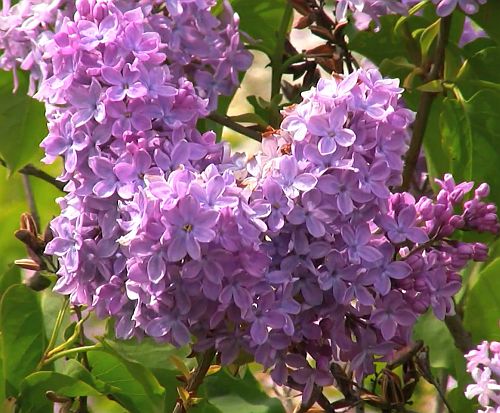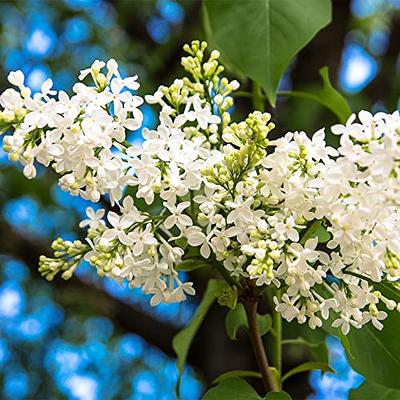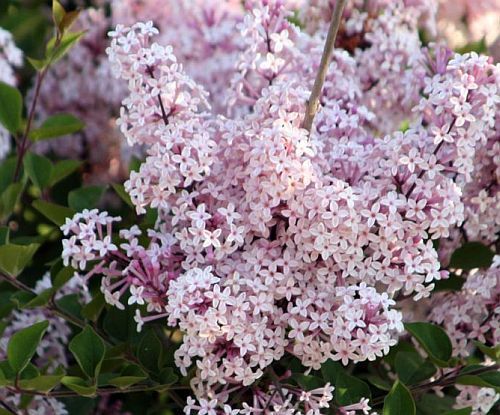Lilac Seeds A Comprehensive Guide
Lilacs are beloved for their stunning blooms, intoxicating fragrance, and hardy nature. While they are typically propagated through cuttings or grafting, growing lilacs from seeds is also a viable option. This method may require more patience and effort, but it can be a rewarding experience for any gardener or nature enthusiast. In this comprehensive guide, we will discuss everything you need to know about lilac seeds, from preparation and planting to harvesting and varieties.
Lilac Seeds Germination: Tips and Techniques for Successful Growth

Before diving into the process of planting lilac seeds, it is important to understand the germination process and how to ensure successful growth. Here are some tips and techniques to help you along the way.
Seed Preparation
The first step in growing lilacs from seeds is to obtain high-quality, ripe seeds from a reliable source. You can collect seeds from your own lilac plants or purchase them from a reputable nursery. It is important to note that not all lilac varieties produce viable seeds, so make sure to do your research beforehand.
Once you have obtained your seeds, there are two methods for preparing them for planting. The first method is to soak the seeds in lukewarm water for 24 to 48 hours before planting. This helps to soften the seed coat and promote germination. The second method is to stratify the seeds by placing them in a damp paper towel or potting mix in a plastic bag and refrigerating them for 2 to 4 weeks. This mimics the natural winter conditions that lilac seeds require for germination.
Choosing the Right Growing Medium
When it comes to growing lilacs from seeds, choosing the right growing medium is crucial. Lilacs prefer well-draining soil with good aeration, so using a potting mix or seed-starting mix is recommended. You can also amend the potting mix with compost or organic matter to enhance soil fertility.
Lilac Seeds Planting: Step-by-Step Instructions for Optimal Results

Now that you have prepared your seeds and chosen the right growing medium, it's time to plant them. Here is a step-by-step guide to help you achieve optimal results.
Step 1: Fill a Seed Tray or Small Pot
Start by filling a seed tray or small pot with the prepared potting mix, leaving about 1 inch of space at the top. Make sure the container has drainage holes to prevent waterlogging.
Step 2: Place the Seeds
Next, place the lilac seeds evenly on the surface of the potting mix. It is important to not overcrowd the seeds, as this can hinder their growth.
Step 3: Cover and Water
Cover the seeds with a thin layer of potting mix or vermiculite, ensuring they are not buried too deeply. Then, gently water the seeds to moisten the soil. It is important to keep the soil consistently moist but not soggy during the germination process.
Optimum Germination Conditions
To ensure successful germination, it is important to provide the right conditions for your lilac seeds. Place the seed tray or pot in a warm, sunny location with indirect sunlight. The ideal temperature for germination is between 60-70°F (15-21°C). It may take anywhere from 2 weeks to several months for the seeds to germinate, so be patient and continue to monitor the soil moisture levels.
Lilac Seeds Edible: Culinary Uses and Potential Benefits

While lilacs are primarily grown for their ornamental value, their seeds are also edible and have been used in traditional medicine for centuries. The seeds contain essential fatty acids, vitamins, and minerals, making them a nutritious addition to your diet. They can be eaten raw or roasted and have a nutty flavor.
In traditional medicine, lilac seeds have been used to treat various ailments such as digestive issues, respiratory problems, and skin conditions. However, it is important to consult with a healthcare professional before consuming lilac seeds for medicinal purposes.
Lilac Seeds Harvest: Timing and Methods for Collecting Seeds

Once your lilac seeds have germinated and grown into seedlings, it's time to think about harvesting the seeds for future propagation. The best time to harvest lilac seeds is in the fall when the seed pods have turned brown and are starting to split open. You can also gently squeeze the pods to check if they are ready to be harvested – if they easily release the seeds, then they are ripe.
To collect the seeds, simply remove the seed pods from the plant and allow them to dry completely. Once dried, you can gently break open the pods and collect the seeds. Store them in a cool, dry place until you are ready to plant them.
Lilac Seeds Varieties: Common Types, Colors, and Characteristics

Lilacs come in a variety of types, colors, and characteristics, making them a versatile and popular choice among gardeners. Here are some common lilac varieties that you can grow from seeds:
- Common Lilac (Syringa vulgaris): This is the most widely grown lilac variety, known for its fragrant purple, pink, or white flowers.
- Japanese Lilac (Syringa reticulata): This variety has large, creamy white flowers and is more heat-tolerant than other lilac varieties.
- Persian Lilac (Syringa persica): With pale pink or lavender flowers, this variety is smaller in size and perfect for smaller gardens.
- Dwarf Korean Lilac (Syringa meyeri): As the name suggests, this variety is smaller in size and has pink or purple flowers.
- Chinese Lilac (Syringa x chinensis): This variety has fragrant white or pale pink flowers and is more resistant to powdery mildew.
- Early Lilac (Syringa oblata): This variety blooms earlier than other lilacs and has pink or purple flowers.
- Late Lilac (Syringa villosa): As the name suggests, this variety blooms later in the season and has fragrant pink or white flowers.
- Hungarian Lilac (Syringa josikaea): This variety has deep purple flowers and is more heat-tolerant than other lilacs.
- Rouen Lilac (Syringa vulgaris 'Rouen'): This variety has double, dark purple flowers and is a popular choice for cut flower arrangements.
Conclusion

Growing lilacs from seeds may require more effort and patience, but it can be a rewarding experience. With the right preparation, growing medium, and conditions, you can successfully germinate and grow lilacs from seeds. And with the variety of colors and characteristics available, you can create a stunning lilac garden that will be the envy of all your neighbors. So why not give it a try and add some beautiful lilacs to your garden? Happy planting!


Leave a comment